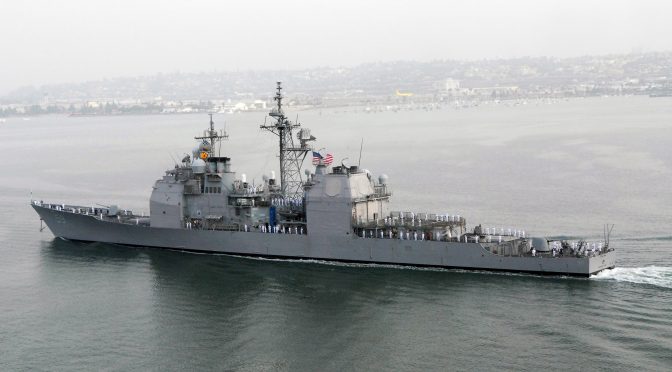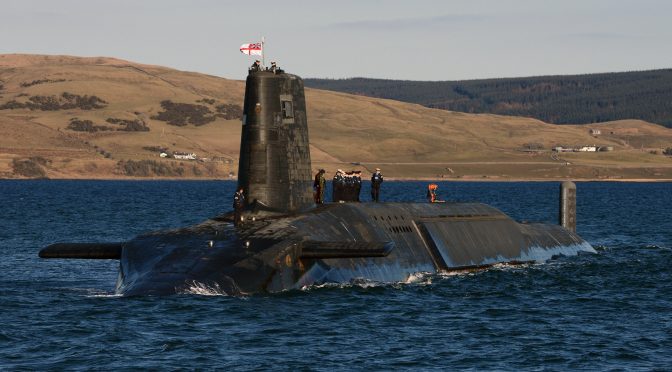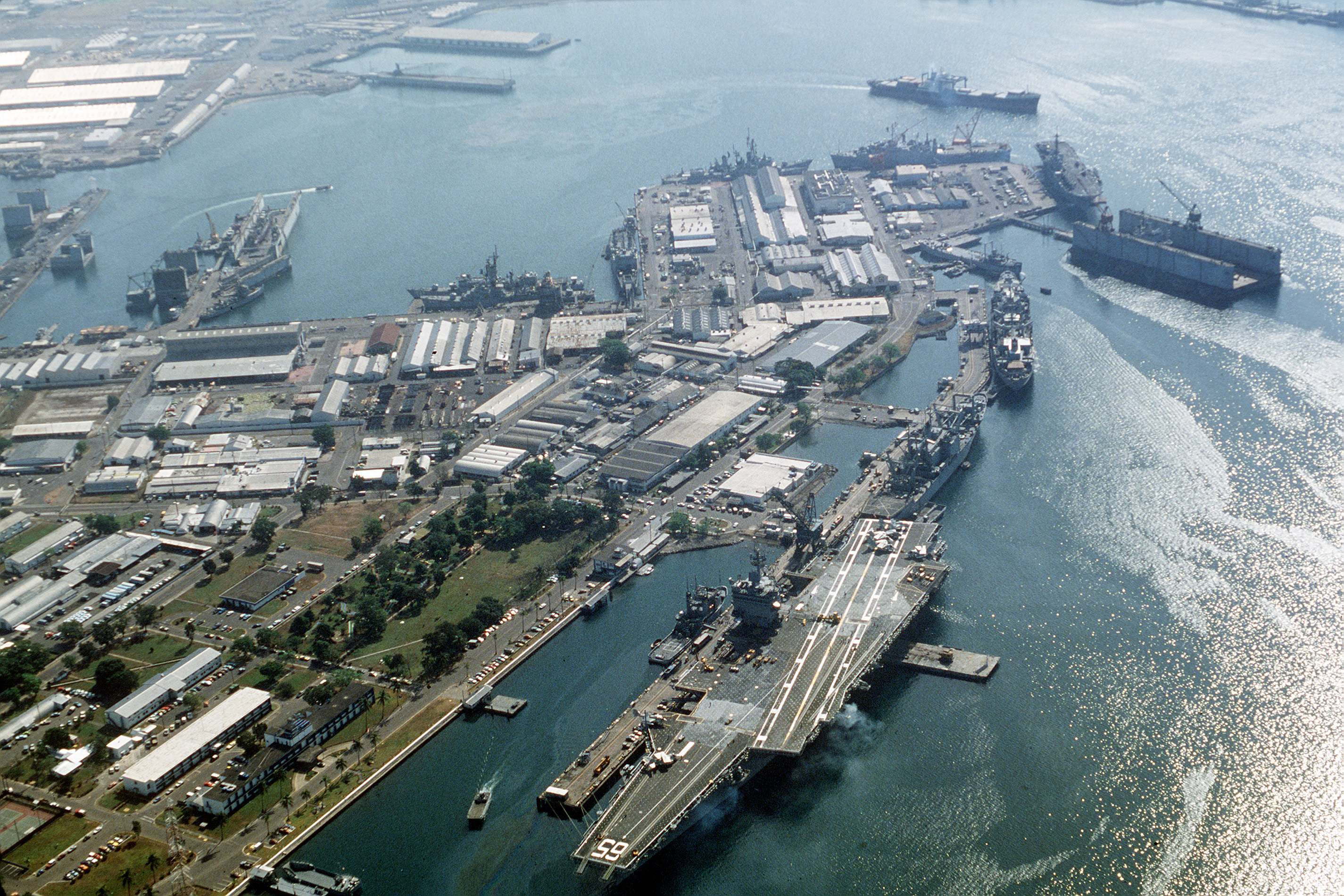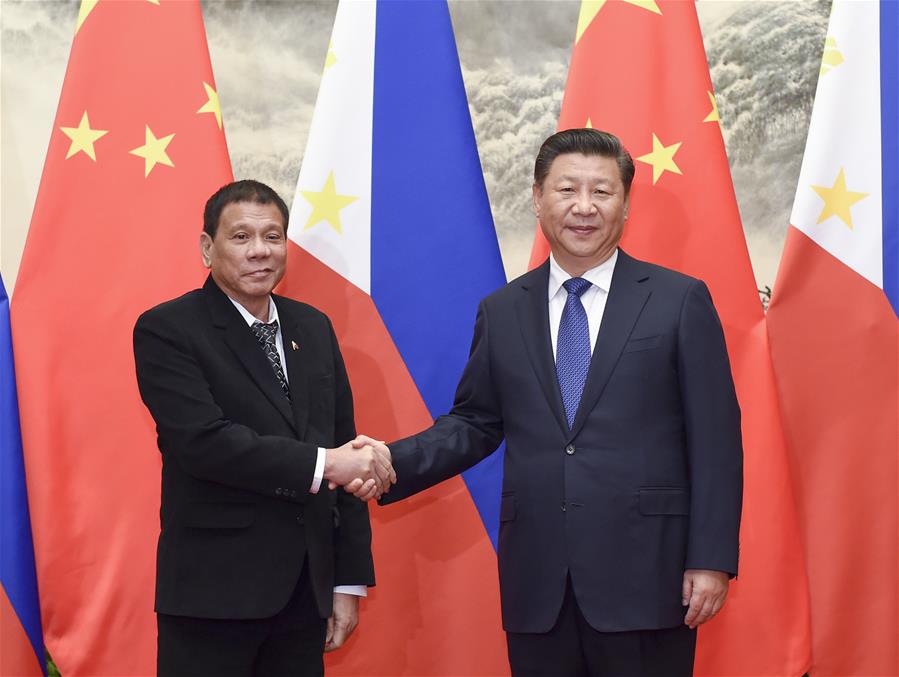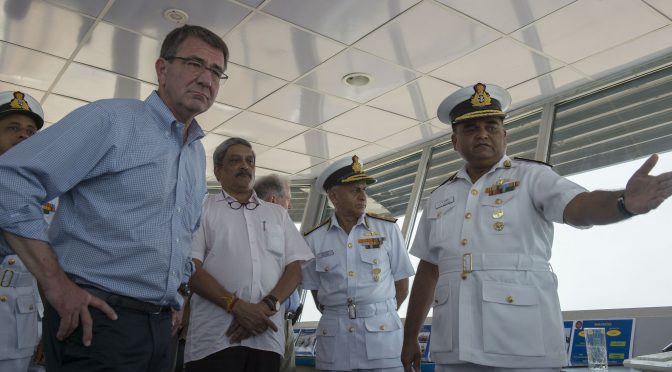CNO Admiral John Richardson recently struck the term A2/AD from Navy lexicon. The debate that follows aims to ascertain the value of the term and understand the context of the CNO’s decision. Bob Poling takes the affirmative position that A2/AD is still a relevant term while Jon Askonas takes the negative.
Affirmative: Dear CNO, A2/AD Still Matters…
By Bob Poling
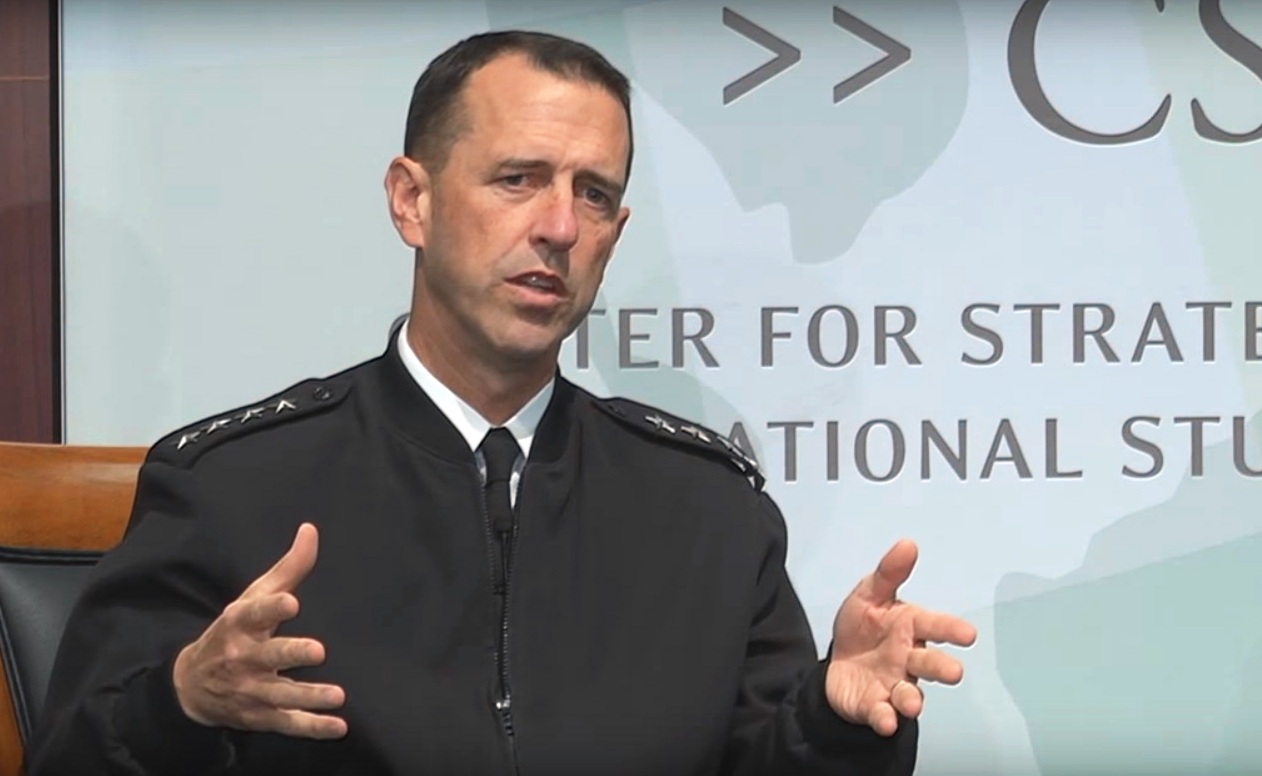
On October 3, 2016, while participating in a Maritime Security Dialogue at the Center for Strategic and International Studies (CSIS), Chief of Naval Operations Admiral John Richardson announced that the Navy would strike A2/AD from its vocabulary. Admiral Richardson stated, “To some, A2/AD is a code-word, suggesting an impenetrable ‘keep-out zone’ that forces can enter only at extreme peril to themselves. To others, A2/AD refers to a family of technologies. To still others, a strategy. In sum, A2/AD is a term bandied about freely, with no precise definition, that sends a variety of vague or conflicting signals, depending on the context in which it is either transmitted or received.” Richardson went on to say, “To ensure clarity in our thinking and precision in our communications, the Navy will avoid using the term A2/AD as a stand-alone acronym that can mean many things to different people or almost anything to anyone.”
But A2/AD is not just Navy terminology. The acronym is used in any number of joint publications and is recognized as a part of joint doctrine. After all, there is perhaps no topic more “joint” than the study of countering A2/AD, and as such, the Navy should continue to use the same terminology being used by the rest of the services instead of abandoning doctrine.
In Line with Naval Tradition
With his prohibition on A2/AD, CNO has upheld the Navy’s reputation for ignoring doctrine. It is no secret that naval officers rail against doctrine and adhere to it grudgingly. Corbett warned naval strategists to not become enamored with maxims when studying war as it stifles good judgment. Roger W. Barnett in his book on the Navy’s strategic culture provides an accurate description of this anathema noting, “Navy strategists look upon written doctrine as maxims and are wholly uncomfortable with it. To the naval strategist, the combination of definitions and doctrine becomes rather toxic.” Admiral Richardson exemplifies Barnett’s views and if one watches the video of his remarks at CSIS, his disdain for A2/AD is clear. But A2/AD is not just jargon. It is a viable term that if used in the proper context can convey the fidelity CNO is looking for. Moreover, it is a term that the joint force is familiar with and continues to use. Admiral Richardson’s ban on A2/AD has in essence forced the Navy to turn its back on prescribed joint doctrine and terminology
Granted, blind adherence to doctrine is not necessarily a good thing. However, in this case adherence to the terminology laid forth in doctrine is useful, especially since all of the services are so vested in counter A2/AD. In Chapter One of Joint Publication One (JP-1), former Chief of Staff of the U.S. Army, General George H. Decker’s stated, “Doctrine provides a military organization with a common philosophy, a common language, a common purpose and a utility of effort.” The Department of Defense’s position on doctrine is clearly articulated in subsequent paragraphs declaring, “the use of joint doctrine standardizes terminology, training, relationships, responsibilities and processes among all of the U.S. forces to free the joint force commanders (JFCs) and their staffs to focus on solving strategic, operational, and tactical problems.” Finally, Naval Doctrine Publication 1, Naval Warfare defines doctrine thus, “Doctrine is not an impediment to a commander’s exercise of imagination; rather, it is a framework of fundamental principles, practices, techniques, procedures, and terms that guides a commander, commanding officer, or officer-in-charge in employing force(s) to accomplish the mission. Doctrine provides the basis for mutual understanding within and among the Services and national policy makers. It ensures familiarity and efficiency in the execution of procedures and tactics.” Based on these definitions alone, including the Navy’s cut on doctrine, Admiral Richardson’s comments clearly contradict the expectations articulated for the joint force. Instead of fostering unity of effort and a common approach to A2/AD, CNO’s edict has the potential to drive a wedge between the Navy and the other services.
Need for Inter-Forces Cooperation
Another problem with CNO Richardson’s proclamation is it contradicts the Joint Operational Access Concept (JOAC), 1.0 which guides the joint force on how to approach A2/AD. “The JOAC describes in broad terms how joint forces will operate in response to emerging anti-access and area-denial security challenges” and, “… envisions a greater degree of integration across domains and at lower echelons than ever before.” Likewise, the JOAC defines anti-access (A2) and area-denial (AD) for the joint force as follows, “Anti-access refers to those actions and capabilities, usually long-range, designed to prevent an opposing force from entering an operational area. Anti-access actions tend to target forces approaching by air and sea predominantly, but also can target the cyber, space, and other forces that support them. Area-denial refers to those actions and capabilities, usually of shorter range, designed not to keep an opposing force out, but to limit its freedom of action within the operational area. Area-denial capabilities target forces in all domains, including land forces.”
Granted these definitions may not be as concise as CNO may like, but they are the accepted joint definitions, and they do cover the spectrum of potential threats. As these definitions are not suitable for CNO then why not approach the A2/AD conundrum in the same fashion as the Navy approaches warfare? For example, the Navy’s approach to Air Defense is just as convoluted as CNO suggests A2/AD is. The Air and Missile Defense Commander (AMDC) is responsible for defending the force against air threats. But air threats can be a variety of things like ballistic missiles, aircraft and anti-ship cruise missiles (ASCM); all of which must be dealt with in a different fashion based on each one’s ranges and capabilities. To manage the variety of threats the AMDC publishes an OPTASK Air Defense plan which provides specific guidance that has been tailored based on the area of operations and the threats that are present, thus leveling the playing field and ensuring all the players are on the same page. The point is, this methodology represents how the Navy has successfully operated for decades. The inherent flexibility of this approach to warfare allows the Navy to adapt to ever changing environments and threats, regardless of the region. It should be no different where A2/AD is concerned.
Conclusion
Admiral Richardson’s decision to strike A2/AD from the Navy’s lexicon only sends conflicting signals to the rest of the Joint Force, our allies, and partners. On the surface, it looks as if the Navy is no longer a team player where A2/AD is concerned. Still, others are no doubt wondering why CNO has done this when none of the other services have gone this route. Arguably, the elimination of A2/AD from the Navy’s vocabulary is more likely to undermine the clarity of thinking and precise communication CNO desires. If I could whisper in CNO’s ear, I would recommend he demand more rigorous thinking and adherence to the JOAC’s vision of A2/AD instead of throwing out the term.
Negative: A2/AD is an Unoriginal and Unhelpful Term In Understanding Threats
By Jonathan D. Askonas
A2/AD, for the uninitiated, stands for “Anti-Access/Area Denial,” shorthand for a variety of technological and tactical changes supposedly creating new and unique military challenges for the United States to confront. What makes doctrinal language useful? It provides a name and set of concepts that help us think about a phenomenon in order to improve military performance. My contention is that A2/AD conceals and obscures more than it clarifies and is thus not useful doctrinal language.
What is an “Anti-Access/Area Denial” military system? In normal use, A2/AD refers to technologies and tactics which, through precision guidance, communications, and firepower, make the deployment and use of American forces riskier and more expensive. Which is to say, they are military systems. One of the beauties of A2/AD is that anything short of tactical scenarios the U.S. military is itching to engage (like a rerun of the 1991 Iraqi Turkey Shoot) becomes “A2/AD.” Anti-ship ballistic missiles (ASBMs)? A2/AD. Small, swarm-tactic Iranian littoral boats? A2/AD. Integrated air defense systems (IADSs)? A2/AD. Diesel attack subs? A2/AD. Any modern military technology that enables a great power to project force past its own borders in ways which even marginally threaten the West’s ability to conduct combined arms operations can be subsumed in a sexy operational concept. But this overbroad idea has at least three fatal problems which doom it to the conceptual dustbin.
A2/AD Deceives Us Into Confusing the Tactical, Operational, and Strategic Levels of Warfare

The biggest problem with A2/AD is that it carelessly elides the distinguishing levels of war, smuggling all kinds of assumptions and non sequiturs into our thinking. When most people talk about A2/AD, they refer to technological capabilities which are capable of attacking/hampering Western capabilities (tactical) in ways which increase the risk of the West acting in specific areas (operational), to the end of limiting Western influence (strategic). But reality almost never lines up with this picture, even in the canonical examples of A2/AD. Take the South China Sea, where Chinese investment in ASBMs, diesel attack subs, and other hardware are supposedly part of a strategy of A2/AD designed to minimize American ability to intervene in the region. And yet, this picture falls apart on closer inspection. At the technological level, complex kill-chains create all kinds of vulnerabilities in China’s new (and relatively untested) weapons systems which, when it comes to operational considerations, render them unreliable, particularly as American forces adapt to them (the traditional response to operating in “denied” territory). And at the strategic level, A2/AD as a strategy is absurd. War is politics by other means – how are extra missiles by themselves supposed to force American carrier battle groups not to enforce freedom of the seas? China has not attempted to sink them in the past not because it lacked the capability but because it lacked the will. The ultimate anti-missile defense system is threat of unstoppable violence should the American people be attacked. A2/AD’s conceptual confusion about how technologies, tactics, operations and strategy interrelate undermines any utility the idea might have.
A2/AD Lends Itself To An Overly Cautious, Defensive, and Unhistorical Mindset
As the CNO himself pointed out, A2/AD encourages a cautious, defensive, and unhistorical mindset. To the first point, A2/AD, with its language of “area denial” lends itself to being construed as defensive in nature. For example, “A2AD capability is not offensive or aggressive in nature,”French General Denis Mercier and NATO supreme allied commander for transformation said last October. “It’s principally a defensive measure. So we have to consider it, we have to be aware of it, we have to include it in our planning but it’s not the threat as such.” Because it elides the levels of warfare, A2/AD transforms the defensive capabilities of the weapon (tactical) into a defensive intent on behalf of the enemy (strategic). And yet, as even the most greenhorn strategist knows, because warfare is a competitive activity, changes in relative advantage determine outcomes and shape the overall operational picture, regardless of whether the weapons themselves are offensive or defensive in nature. Moreover, in many cases, the weapon systems in question are not obviously solely defensive in nature, nor only capable of targeting American forces.
To the second point, that A2/AD is anachronistic, it seems peculiar that a concept as old as warfare has been highlighted as the next big new defense threat. The ability to make certain areas of the battlespace difficult or impossible for the enemy to access, thus shaping his choices, is one of the foundational mechanics of warfare. Conceptually, minefields, coastal defense guns, and U-Boats had (or sometimes had) identical functions to contemporary “A2/AD” weaponry. Because it highlights new technologies of area denial, A2/AD hampers rather than helps our ability to use military history and analogical thinking to come up with creative solutions to contemporary military challenges.
A2/AD traps Us Into a Rigid Conception of the Enemy and the Enemy’s Strategy
By fogging up the distinguishing levels of war and highlighting the ways great power rivals are working to defend against U.S. intervention, A2/AD lulls us into projecting our operational challenges onto the intentions of our enemies. In other words, A2/AD tricks us into thinking that, because it is the case that widespread ASBM deployment in the East China Sea or IADSs over Syria increase the relative risk of an American intervention, those actions were taken for that purpose. By tying an operational fact (ASBMs are a threat to American ships) to a strategic assumption (therefore, ASBMs are primarily intended to deny access to American ships), A2/AD hurts our ability to imagine what else the enemy might be up to. The same missiles which can sink an American carrier can also hold Taiwanese naval forces at risk; the same IADS that limits American intervention in Crimea can also target actively target Lithuanian or Estonian fastmovers. I don’t mean to suggest that these are likely possibilities, but they are possibilities, and ones which A2/AD belays. The problem is that the enemy gets a say, too. Just because we have an operational concept which says that Chinese investment in a blue water navy or Russian research into advanced air-to-air missiles are primarily aimed at limiting U.S. influence does not make it so. And, even if this is true today, there is nothing to suggest that the enemy might change his mind. By incorporating assumptions about enemy intent into its model, A2/AD lulls us into thinking we understand the enemy.
Conclusion
At the end of the day, A2/AD furthers a strategic culture that obsesses over the “next big thing” and neglects the fundamentals. To the extent that A2/AD is correct about the need to incorporate standoff weaponry into our tactical calculations, it is trivial; that is a well-understood part of operational art. And to the extent that A2/AD makes non-trivial claims about the enemy’s strategy or intent (or the nature of warfare), it is dangerously blithe, imprecise, and blinkered. Like the Revolution in Military Affairs, Full Spectrum Warfare, and NetWar before it, A2/AD will soon join the graveyard of Pentagon intellectual fads that preceded it. And well it should.
Bob Poling is a retired Surface Warfare Officer who spent 24 years on active duty including tours in cruisers, destroyers and as commanding officer of Maritime Expeditionary Security Squadron TWO and Mission Commander of Southern Partnership Station 2013. From May 2011 to May 2015 Bob served on the faculty of the Air War College teaching in the Departments of Strategy and Warfighting. He was the Naval History and Heritage Command 2014-2015 Samuel Eliot Morison scholar and is pursuing his Ph.D. with the Department of Defence Studies, King’s College London where he is researching Air-Sea Battle concepts used to combat A2/AD challenges encountered during the Solomon Islands Campaign.
Jon Askonas is a 2nd year DPhil candidate in International Relations at the University of Oxford, where he is a Beinecke Scholar and a Healy Scholar. He is interested in the relationship between knowledge production/transmission and decision-making in large organizations. He has a BS in International Politics (summa cum laude) from Georgetown University and a MPhil(Merit) from Oxford. He has worked at the Council on Foreign Relations and the US Embassy in Moscow.
The opinions and assertions contained herein are the private opinions of the authors and are not to be construed as official or reflecting the views of the Department of Defense, the United States Government, or the United States Navy, or any organization – they are the authors’ personal opinions.
Featured Image: U.S. Navy guided missile cruiser USS Princeton. U.S. Navy Photo by Mass Communication Specialist Seaman Jake Berenguer (Released)

